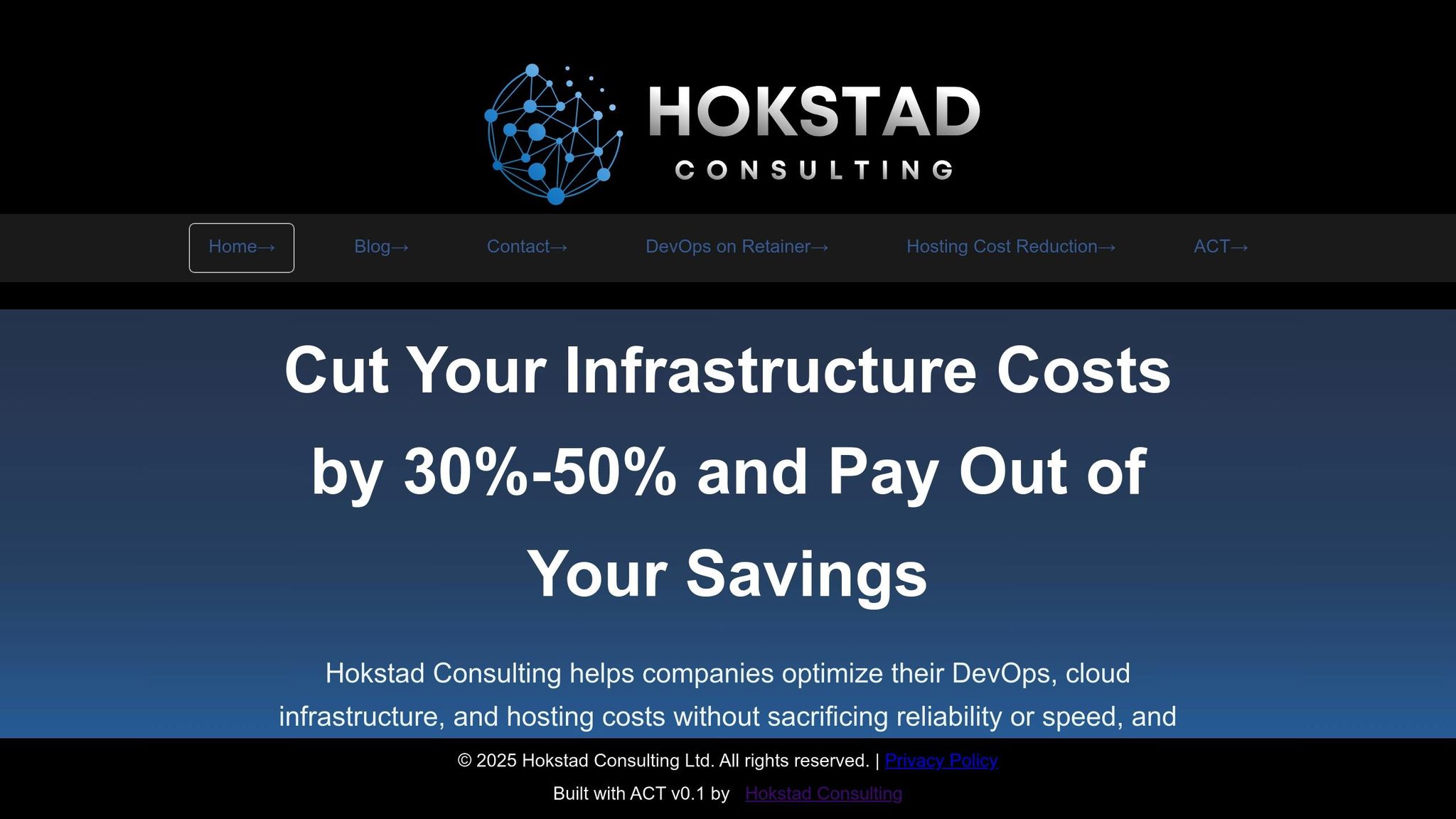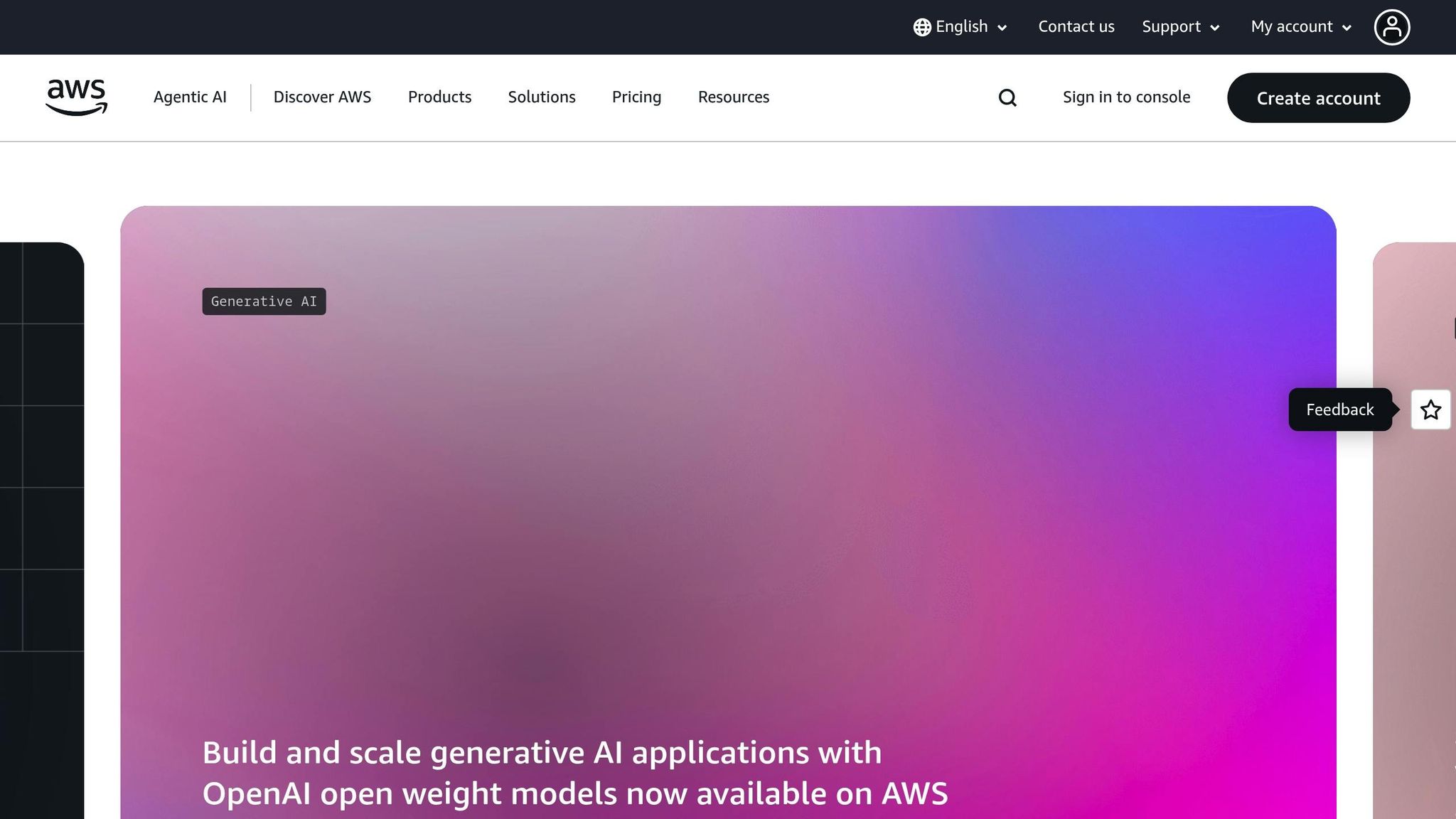Predictive scaling is a smarter way to manage cloud resources and costs. It uses historical data and machine learning to forecast demand, ensuring resources are adjusted before spikes or dips occur. Unlike reactive or scheduled scaling, it aligns resources with actual needs, cutting waste and improving performance. UK businesses, especially those with fluctuating workloads, can save up to 20%-44.9% on cloud expenses while maintaining service reliability.
Key Takeaways:
- How it works: Analyses CPU, memory, and network usage to predict demand and allocate resources automatically.
- Benefits: Avoids over-provisioning (wasting money) and under-provisioning (risking poor performance).
- Savings: Reduces idle resource costs by scaling down during quiet periods and optimising resource use.
- UK-specific considerations: Aligns with GDPR, regulatory needs, and local demand patterns.
Predictive scaling is especially useful for industries like e-commerce, finance, and media, where demand can be unpredictable. By implementing clear policies and monitoring results, businesses can optimise costs without sacrificing performance.
How Predictive Scaling Works
Analysing Historical Data with Machine Learning
Predictive scaling relies on studying historical performance data from your cloud infrastructure. It keeps a close eye on metrics like CPU usage, memory demand, network throughput, and application-specific indicators such as database query performance or API request volumes.
Using machine learning, the system processes this data to uncover patterns and trends. Over time, as more data is collected, time series models refine their predictions by factoring in seasonal and cyclical variations. These models can identify subtle connections between metrics that might not be immediately obvious to human observers.
By employing advanced techniques, such as neural networks and regression analysis, the system can grasp complex relationships between metrics. This allows predictive scaling not only to foresee when demand will rise but also to pinpoint which resources will be impacted. These insights enable highly accurate forecasting of resource requirements.
Predicting Metrics and Allocating Resources
Once patterns are identified, predictive scaling generates detailed forecasts for each monitored metric. These predictions cover various timeframes, from immediate adjustments to planning weeks ahead. This flexibility supports both short-term resource management and long-term capacity planning.
Metrics like CPU usage, memory, and network traffic are forecasted to schedule resource adjustments with precision. For instance, network traffic predictions help optimise bandwidth allocation and content delivery. The system can even estimate the geographical distribution of requests, ensuring resources are allocated efficiently across different availability zones.
Confidence levels in the forecasts determine whether scaling actions should be proactive or more cautious. Resource allocation then balances anticipated demand with cost considerations, factoring in pricing differences across instance types and availability zones. This approach ensures resources are scaled effectively without unnecessary expense.
Defining Predictive Scaling Policies
Accurate forecasts are only part of the equation - clear scaling policies are vital for real-time resource management. Setting up predictive scaling begins with defining policies that dictate how the system should respond to different forecast scenarios. These policies outline threshold values, scaling limits, and resource allocation preferences tailored to your specific needs.
A good starting point is using a forecast-only mode. In this phase, the system generates scaling recommendations, allowing you to compare predictions with actual demand patterns. This step builds trust in the system’s accuracy before enabling automatic scaling.
Once the forecasts prove reliable, you can activate real-time scaling. The system then adjusts resources ahead of expected demand, ensuring your infrastructure is ready when needed. Policies can also include minimum and maximum resource limits to prevent over- or under-scaling. For example, you might choose to scale more aggressively during peak hours and more conservatively during quieter times.
Regularly refining these policies is key to maintaining performance as your applications evolve. The system continuously evaluates scaling decisions against actual outcomes, updating its models and parameters to improve accuracy. Reviewing logs of scaling actions can also help you analyse cost savings and performance improvements, ensuring the system continues to meet your needs while optimising expenses.
Cost Reduction Through Predictive Scaling
Avoiding Over-Provisioning and Under-Provisioning
Allocating cloud resources incorrectly can be a costly mistake. Over-provisioning means paying for unused compute power, memory, and storage, while under-provisioning risks poor performance, which can harm customer experience and revenue.
Predictive scaling takes the guesswork out of resource management. By aligning resources with forecasted demand, it ensures cost efficiency through precise capacity adjustments. Unlike reactive scaling, which waits for resources to be stretched thin before acting, or scheduled scaling, which follows fixed patterns that may not match actual usage, predictive scaling makes proactive adjustments. It analyses demand forecasts to optimise performance and minimise waste.
This approach continuously monitors resource utilisation, adjusting capacity in advance so you only pay for what you genuinely need. The result? Tangible savings and improved operational efficiency.
Measuring Cost Savings
To understand the financial benefits of predictive scaling, focus on a few key metrics. Start by comparing your monthly cloud bills before and after implementation to quantify direct savings in compute costs.
Next, calculate your cost per unit of work - whether that’s per transaction, per user, or per data query - to see how operational efficiency has improved. For a more detailed picture, track costs during peak demand periods to highlight how provisioning only when necessary saves money. Don’t overlook indirect savings either; better resource allocation can enhance application response times, which might reduce customer churn and increase conversions.
These metrics demonstrate the financial advantages of predictive scaling in a clear and measurable way.
Cutting Idle Resource Costs
Idle resources are a hidden drain on budgets. These include underused compute instances, rarely accessed storage, or network capacity sitting idle during off-peak hours. Predictive scaling helps tackle these inefficiencies head-on.
For example, it identifies underutilised resources, consolidates workloads, or scales down capacity during quieter periods. In storage management, predictive scaling can adjust data access tiers based on usage - keeping frequently accessed data on faster, premium storage while moving less-used data to cheaper options.
The same principle applies to network resources. Instead of maintaining constant bandwidth, predictive scaling adjusts capacity to match traffic patterns, which is particularly useful for businesses with demand fluctuations across regions.
Database scaling is another area where predictive scaling shines. It forecasts query loads and dynamically adjusts database instance sizes. During slow periods, it reduces the capacity of expensive instances, scaling them back up as demand rises. This approach ensures cost savings without sacrificing performance.
At its core, predictive scaling relies on detailed monitoring. By tracking utilisation at a granular level, it enables precise adjustments that cut waste while maintaining the performance your business demands.
Implementing Predictive Scaling: Requirements and Best Practices
Requirements for Predictive Scaling
To make predictive scaling work effectively, it’s crucial to establish a strong foundation. Start by implementing monitoring systems to track essential metrics like CPU utilisation, memory usage, network performance, database queries, and user sessions. These metrics are the backbone of any predictive scaling strategy.
You’ll also need at least 3–6 months of historical data to train accurate predictive models. This data should reflect seasonal trends, business cycles, and any unusual events that impacted your workload. Without this context, predictive algorithms may struggle to generate reliable forecasts.
Ensure your cloud infrastructure supports automated scaling through API access and has the correct permissions configured. Most major cloud providers offer predictive scaling features, but these require proper setup and access controls to function seamlessly.
For application design, stateless apps are ideal as they scale more efficiently. If your applications are stateful, plan carefully for session management and data consistency to avoid operational hiccups.
Best Practices for Maximum Efficiency
Once you’ve met the basic requirements, follow these best practices to maximise the effectiveness of predictive scaling:
- Start with non-critical workloads: Test predictive models on less critical applications first. This lets you fine-tune your setup without risking production stability.
- Retrain models regularly: Update your models monthly or quarterly to keep up with changing usage patterns. Events like product launches, seasonal trends, or marketing campaigns can significantly affect demand.
- Use reactive scaling as a backup: Combining predictive and reactive scaling ensures your system can handle sudden, unexpected spikes in demand.
- Monitor scaling actions: Set up alerts to track deviations or failures in your scaling processes. This helps you quickly identify when models need adjustments or when infrastructure issues arise.
- Account for warm-up times: Predictive scaling works best when scaling actions are triggered before demand surges, giving applications time to warm up and handle the load.
UK-Specific Considerations
For businesses operating in the UK, it’s important to tailor predictive scaling strategies to local regulations and operational nuances:
- UK GDPR compliance: Ensure that any data used for predictive scaling is processed within approved jurisdictions to meet data protection standards.
- Regulated industries: In sectors like finance, document your scaling policies and maintain audit trails to meet regulatory requirements.
- Peak usage patterns: UK peak demand often aligns with GMT working hours, but post-Brexit changes may alter traffic patterns. Adjust your models accordingly.
- Support schedules: Align scaling policies with UK support hours to ensure availability during critical times.
- Currency fluctuations: Factor in GBP–USD exchange rate changes when calculating cloud costs across regions.
Hokstad Consulting offers expertise in cloud cost engineering, including predictive scaling solutions tailored to UK-specific needs. Their approach focuses on cutting cloud costs by 30–50% while ensuring compliance with data protection laws and industry regulations.
Need help optimizing your cloud costs?
Get expert advice on how to reduce your cloud expenses without sacrificing performance.
Conclusion: Benefits of Predictive Scaling
Key Points on Predictive Scaling
Predictive scaling takes a forward-thinking approach to managing cloud resources, adjusting capacity before demand surges occur. For UK businesses, this means lower costs and better performance. By using machine learning to anticipate demand, predictive scaling can cut cloud infrastructure expenses by as much as 44.9% [1]. This makes it a game-changer for companies looking to streamline their technology budgets.
Another major advantage is its ability to maintain application performance during traffic spikes. By spinning up new task replicas in advance, predictive scaling ensures that services remain responsive, avoiding the lag often seen when systems scramble to catch up with sudden demand. This combination of cost efficiency and reliable performance is invaluable for businesses aiming to provide consistent user experiences without overpaying for infrastructure.
As these algorithms learn and adapt over time, they refine their scaling decisions to match changing demand patterns. Unlike reactive systems, which can prematurely scale down resources only to scale them back up when demand rebounds, predictive scaling avoids this inefficiency. The result? Lower costs and improved service reliability.
How Hokstad Consulting Can Help

UK businesses can maximise these benefits with the help of experts like Hokstad Consulting. Specialising in cloud cost optimisation, Hokstad tailors predictive scaling solutions to meet the specific needs of UK companies. They also ensure compliance with UK GDPR and industry-specific regulations, making them a trusted partner in sectors like finance and healthcare.
Hokstad Consulting is well-versed in the challenges faced by UK businesses, from navigating post-Brexit operational complexities to adhering to strict regulatory standards. Their flexible engagement options include a No Savings, No Fee
model, where fees are capped based on the actual savings they deliver. This approach aligns their success with yours.
By integrating predictive scaling into your cloud infrastructure, Hokstad ensures a smooth transition. Their expertise spans DevOps transformation, advanced monitoring tools, and automated CI/CD pipelines, enabling predictive scaling to work seamlessly within your existing workflows. With this level of integration, you can track cost savings and performance improvements in real-time - without disrupting day-to-day operations.
Whether you're planning a cloud migration or looking to fine-tune your current setup, Hokstad Consulting’s proven strategies ensure predictive scaling is implemented with zero downtime, helping you achieve both efficiency and peace of mind.
AWS re:Invent 2018: Predictive Scaling for More Responsive Applications (API330)

FAQs
What makes predictive scaling more cost-efficient and effective than reactive or scheduled scaling?
Predictive scaling takes resource management to the next level by anticipating future demand and adjusting resources ahead of time. This approach ensures a balance between cost efficiency and performance, unlike reactive scaling, which only kicks in when changes occur in real time. By predicting workload shifts, businesses can avoid the pitfalls of over-provisioning (wasting money on unused resources) and under-provisioning (struggling to meet demand during peak times). The result? Consistent performance and smarter spending.
Unlike scheduled scaling, which sticks to rigid timetables, predictive scaling adapts dynamically to actual workload trends. This adaptability is a game-changer during unexpected demand spikes, as it ensures resources are deployed efficiently without relying on pre-determined schedules. By fine-tuning resource allocation, predictive scaling not only helps keep cloud costs in check but also ensures services remain reliable, even during sudden surges.
How does predictive scaling help optimise cloud resources and reduce costs?
Predictive scaling anticipates future demand by analysing historical usage patterns, allowing cloud resources to adjust automatically. This forward-thinking strategy ensures your infrastructure operates with the right capacity at the right time, helping to avoid over-provisioning and cutting down on unnecessary expenses.
To get started with predictive scaling, you'll need to dive into historical performance data, establish custom metrics, and configure autoscaling policies that align with your specific workload needs. By using machine learning models, you can improve accuracy by spotting trends and identifying anomalies. These models enable your cloud platform to scale resources up or down automatically, based on real-time needs. Regularly reviewing and fine-tuning these models ensures they stay effective as your workloads change over time.
This approach not only keeps costs under control but also boosts performance by reducing delays during sudden traffic surges - making it a must-have strategy for businesses aiming to optimise their cloud infrastructure.
How can UK businesses use predictive scaling while staying compliant with GDPR and local regulations?
To meet GDPR and local regulatory requirements, UK businesses using predictive scaling must carry out Data Protection Impact Assessments (DPIAs). These assessments help pinpoint and mitigate risks tied to AI and cloud data processing. By doing so, businesses can protect personal data while adhering to the guidelines set by the Information Commissioner's Office (ICO).
Implementing strong technical and organisational measures is equally crucial. This includes using data encryption, setting up secure access controls, and conducting regular security audits. Furthermore, businesses should establish clear contracts with cloud providers, outlining specific data protection responsibilities to ensure compliance with UK legal standards.
By taking these precautions, businesses can effectively manage cloud costs through predictive scaling without compromising their compliance with GDPR and related regulations.
